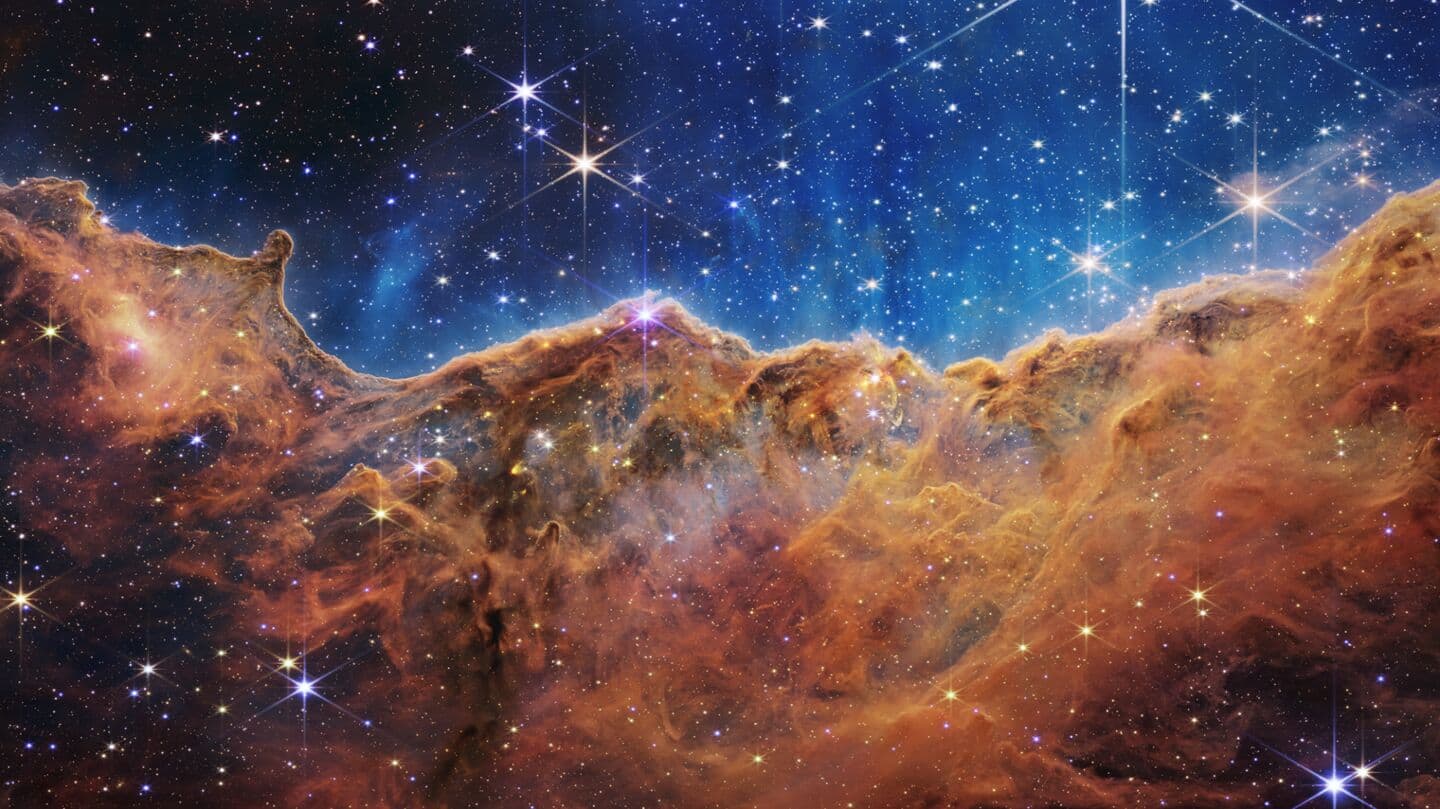
We finally know how galaxies in early universe were like
What's the story
The James Webb Space Telescope (JWST) has offered a detailed view of galaxy formation in the early universe. A team of astronomers from the University of Cambridge studied over 250 young galaxies that existed between 800 million and 1.5 billion years after the Big Bang. Their analysis revealed these galaxies were far more chaotic and "messy" than today's orderly structures like our own Milky Way.
Research findings
Research process and findings
The team studied the movement of gas within these galaxies, discovering that most were turbulent, "clumpy" systems. This was in stark contrast to our own Milky Way's smooth rotating disks. The researchers used JWST's NIRCam instrument in a rarely used "grism mode," capturing faint light from ionized hydrogen gas in distant galaxies. They wrote new code to unravel this data, matching it with pictures from other JWST surveys to measure how gas was moving inside each galaxy.
Evolutionary journey
Galaxies in the early universe were chaotic, clumpy systems
The research suggests that as the universe evolved, galaxies became calmer and more ordered. However, in the early universe, star formation and gravitational instabilities created so much turbulence that many galaxies struggled to settle down. "We found huge variation: some galaxies are beginning to settle into ordered rotation, but most are still chaotic," said Lola Danhaive from Cambridge's Kavli Institute for Cosmology.
Turbulence revelation
Shocking revelations about early universe's galaxies
Dr. Sandro Tacchella from the Kavli Institute and the Cavendish Laboratory, said, "Previous results suggested massive, well-ordered disks forming very early on, which didn't fit our models." He added by studying hundreds of lower stellar mass galaxies instead of one or two, they see the bigger picture. "Early galaxies were more turbulent, less stable, and grew up through frequent mergers and bursts of star formation."
Bridging gaps
Future of research and JWST's role
Danhaive said, "This work helps bridge the gap between the epoch of reionization and the so-called cosmic noon, when star formation peaked." She added it shows how galaxy building blocks evolved from chaotic clumps into ordered structures. The research also highlights JWST's capability to probe galaxy dynamics at an unprecedented scale. Future studies will combine these findings with observations of cold gas and dust for a more comprehensive understanding of early galaxies' formation.